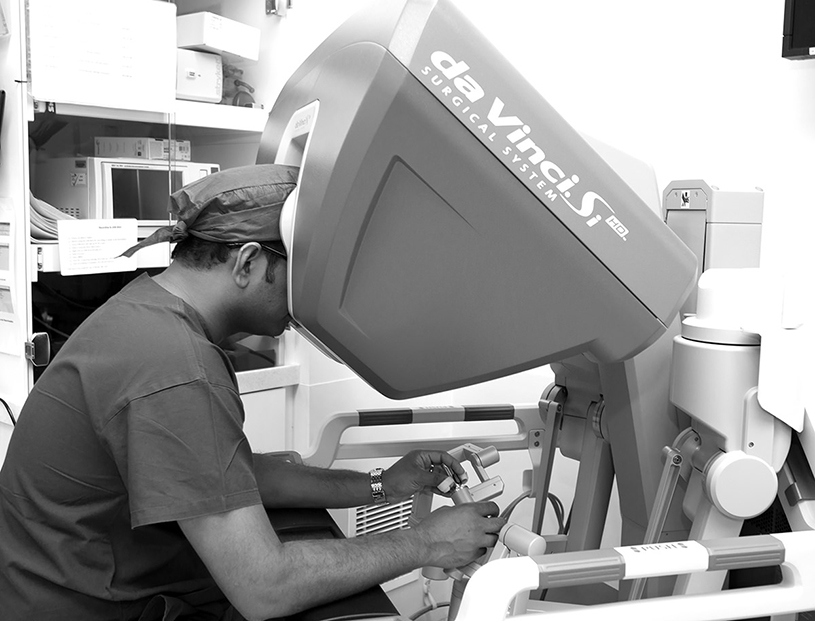Are you considering robotic surgery? Here’s what you need to know
Are you considering robotic surgery? Here’s what you need to know

When it comes to undergoing any medical procedure, less pain, shorter stays in hospital and a quicker recovery is always greatly valued. And with the development and advancement of robotic surgery technology, urological procedures are becoming as quick and easy and effective as possible.
So, what is robotic technology, and why would you consider it as an option when undergoing urological care? Read on to find out.
What is robotic surgery?
Robotic surgery is a surgical method performed by using small tools that are attached to a robotic system. Rather than the surgeon performing the procedure with their own hands, they control robotic arms with a computer. The robotic system includes a camera arm which incorporates a small endoscope that allows the surgeon to view magnified three dimensional HD images of the patient’s body while the surgery is being performed. The remaining arms have very small surgical instruments attached to them. These are controlled by the surgeon’s own hands which are mimicked by the mechanical arms. This allows surgeons to perform delicate and complex procedures that would be difficult or otherwise impossible using other methods. The camera technology used in robotic surgery also allows the surgeon to see the area much clearer too. Far Cry 6
Benefits of robotic surgery
Robotic surgery is particularly beneficial in urology and is becoming common practice for the treatment of a range of urologic conditions and diseases. Benefits of robotic surgery include:
• Significantly less pain
• Lower risk of infection
• Less blood loss
• Lower risk of complication
• Quicker recovery
• Smaller scars
• Lower risk of side effects, such as erectile dysfunction after a cystectomy
• A shorter stay in hospital
Common urological procedures using robotic surgery
Some of the common urologic procedures that robotics are being used in include:
• Radical prostatectomy (removal of the cancerous prostate)
• Nephrectomy (removal of entire kidney)
• Partial and radical nephrectomy (removal of part or all of the kidney)
• Cystectomy (removal of the bladder)
Contact us today!
Dr Arianayagam is a highly experienced robotic surgeon with many years of experience using robotic techniques to treat a range of conditions. Dr Arianayagam is an expert in the field of urology and is widely considered one of the top urological oncologists in Australia. If you have any questions about how to maintaining healthy urinary system or would like to book an appointment, please feel free to contact or call Dr Arianayagam’s office on 1300 307 990, and his staff will be able to assist.
Do you want to learn more about urological health? Check out some of our recent blog posts:
Vasectomy: What you need to know
10 bladder health superfoods you should incorporate in your diet

Understanding Kidney Stones: Causes, Symptoms, and Treatment Options
While most kidney stones will pass on their own accord, larger stones may require surgery. Here’s an overview of kidney…

Understanding Urinary Diversion: Three Types and Their Applications
There are three different types of urinary diversion, each applicable for different situations. Let’s take a closer look at all…






